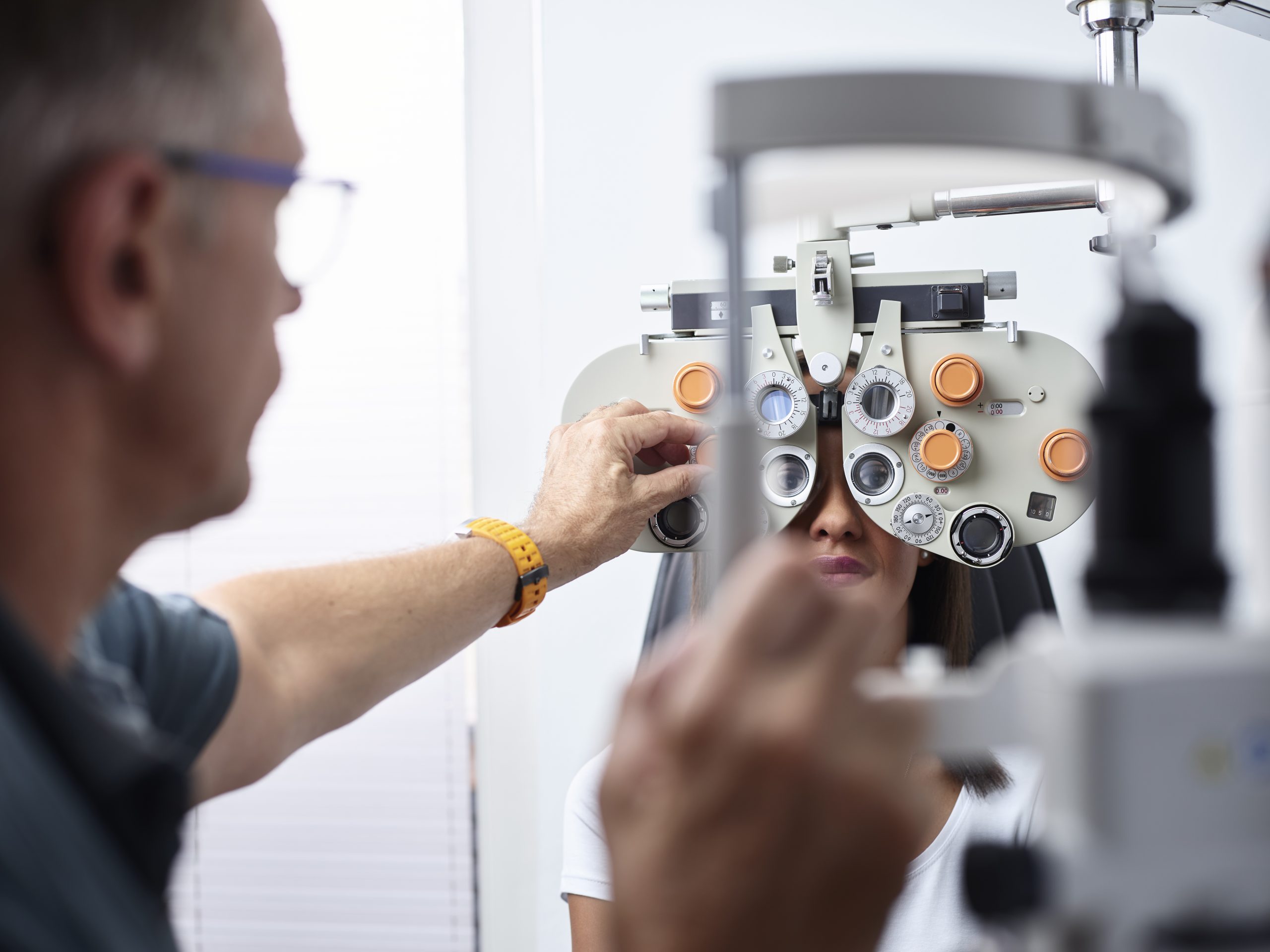Floaters
Floaters are extremely common. They are pieces of debris in the vitreous gel of the eye that cast shadows on to the retina. It’s these shadows that you see.
It’s entirely normal to have a few floaters. When they first appear, they usually affect one eye, but may affect both eyes at the same time.
In fact, they’re so common, that approximately 66% of the population will have floaters by the time they are in their mid sixties! However, they can occur at any age.
What do floaters look like?
Most people describe floaters as little ‘blobs’ or ‘cobwebs’ or ‘string like’ or ‘amoeba like’ features that move around in the eye, and can be best seen when looking at a light or white plain surface. However, floaters can take any number of appearances and are different in everybody.

What is a posterior vitreous detachment?
The main section of the eyeball is filled with a gel known as the vitreous. When you are young, this fills the back of the eye, so the outer part of the gel is in contact with the retina (which lines the inside of the eye).
As we get older, the vitreous changes and liquefies and eventually comes away from the back of the eye. At this point you may see more floaters than usual.
What is a retinal detachment?

Sometimes, when the vitreous gel comes away from the retina, it can cause flashes of light. This is because the vitreous gel sometimes has areas where it is strongly attached to the retina. As the gel comes away from the retina, the tractional pull on the retinal tissue causes the flashing lights in the eye. Once the traction has ceased, the flashing lights normally subside. However the vitreous detachment may tear the retina. If a hole or tear develops in the retina, then there is an increased risk of there being a retinal detachment. A detached retina can cause blindness, and requires an urgent laser or surgical operation to put the retina back in the right place.
What should I do if I have flashes and floaters?
It is very important that you have your eyes examined urgently (within 24 hours) if you have:
- a sudden increase in your number of floaters
- a sudden increase in your number of floaters and / or flashes of light
- loss of vision
- or a curtain coming down in front of your eye
We can then tell if you are having a posterior vitreous detachment or a retinal detachment, or if anything else is happening to your eyes. There are other less common reasons for floaters – eg: bleeding into the gel in the back of the eye from a damaged blood vessel.
Phone our team and request an urgent (within 24 hours) emergency floaters and flashes appointment (There will be a professional fee for non EyeSense patients) or attend Bristol Eye Hospital Accident and Emergency urgently.
What should I expect during an urgent emergency floaters and flashes appointment?
We will check your vision and measure the pressure in your eyes.
We will then dilate your eyes. This means your vision will be blurry for 8-12 hours and we advise you not to drive during this time. We then examine your eyes and look for tobacco dust, a posterior vitreous detachment and any retinal damage.
Even if we diagnose a posterior vitreous detachment, carefully continue to monitor your symptoms. Please note that if:
- the flashes of light continue
- the floaters increase
- you have a loss of vision
- you have a curtain come down over your vision
- You must attend the local eye hospital A & E urgently. This could save your sight
If you have any questions at any time, please contact us.


